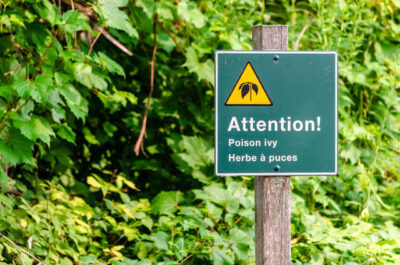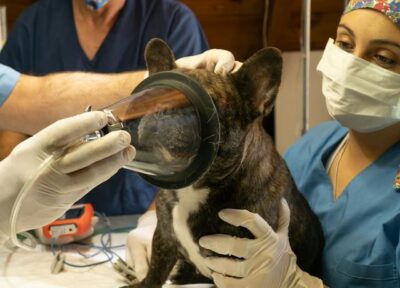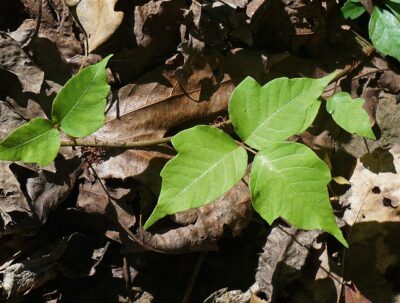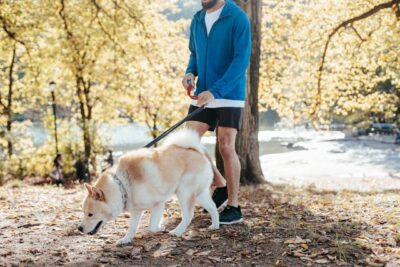Overview
- Introduction: Can Dogs Get Poison Ivy
- Identifying Poison Ivy
- Can Dogs Get Poison Ivy?
- Symptoms of Poison Ivy in Dogs
- Diagnosis and Treatment
- Can Dogs Spread Poison Ivy?
- Other Plants That Can Affect Dogs
- Safety Tips for Dog Owners
- Conclusion: Can Dogs Get Poison Ivy
- Frequently Asked Questions (FAQs): Can Dogs Get Poison Ivy
Introduction: Can Dogs Get Poison Ivy

The Curiosity: Can Dogs Get Poison Ivy
Have you ever wondered if your furry friend could get a poison ivy rash? Many dog owners are curious about this question, especially when exploring the great outdoors with their pets.
Let’s delve into this topic and uncover the truth about dogs and poison ivy, including poison ivy symptoms, how to treat poison ivy, and the risks of poison oak.
It’s important to understand the dangers of the poison ivy plant and how to keep your pet safe while enjoying nature. Can dogs get poison ivy? Let’s find out!
Understanding Poison Ivy: The Plant and Its Effects on Humans and Pets
Poison ivy is a plant known for causing an itchy rash upon contact with its leaves, stems, or roots. This rash, known as poison ivy rash, is caused by an oily resin called urushiol found in poison ivy, poison oak, and poison sumac.
Symptoms of contact with these plants include redness, itching, and blistering of the skin, known as contact dermatitis.
Pets, including dogs, can also get poison ivy rashes if they come into contact with these plants. In severe cases, an allergic reaction to urushiol can lead to a pet needing treatment from a veterinarian or the Pet Poison Helpline.
Understanding how to identify and treat poison ivy exposure is essential for both pet owners and outdoor enthusiasts. Can dogs get poison ivy? Learn how to protect your furry friends from this common plant hazard.

Identifying Poison Ivy
Appearance: Recognizing Poison Ivy in Different Seasons
Poison ivy can look different depending on the season. In spring, it may have red leaves, while in summer, it has green leaves.
In fall, the leaves may turn yellow or orange, making it challenging to identify. It’s essential to familiarize yourself with the poison ivy plant’s appearance throughout the year to avoid accidental contact.
Western poison ivy and eastern poison ivy are two common varieties of poison ivy found in different regions, each with its own distinct characteristics.
Locations: Where Poison Ivy Typically Grows
In Florida, poison ivy can be found in a variety of habitats, including forests, woodlands, swamps, and along the edges of roads and trails. It often grows in both sunny and shaded areas, particularly in areas with moist soil.
In Georgia, poison ivy is commonly found in similar environments, such as forests, woodlands, and along riverbanks. In Ohio, poison ivy can be found in wooded areas, along fences, and in disturbed areas such as along roadsides and in fields.
Can dogs get poison ivy? Yes, they can. It’s important to be cautious and learn to identify poison ivy in these regions to avoid contact and potential allergic reactions.
Toxicity: The Component That Causes Irritation
The main culprit behind the skin irritation caused by poison ivy is the oily resin called urushiol. This substance is present in all parts of the plant and can remain potent on surfaces for years. When urushiol comes into direct contact with exposed skin, it can trigger a reaction, leading to itchy rashes and blisters.
Pet parents should be cautious, as dogs can also suffer from poison ivy reactions if their skin comes into contact with the plant or if they ingest any part of it. Ingested poison ivy can lead to an upset stomach in dogs, making it essential to prevent them from rolling in or eating the plant.

Can Dogs Get Poison Ivy?
Myth vs. Fact: Common Misconceptions about Dogs and Poison Ivy
There are several common misconceptions about dogs and poison ivy. One myth is that dogs cannot get poison ivy rashes because of their fur.
However, dogs can get poison ivy if the plant’s oils come into contact with their skin.
It’s important for pet owners to be aware of this and take precautions when exploring areas where poison ivy plants may be present. Can dogs get poison ivy? Let’s debunk the myths and find out the truth!
Scientific Explanation: How Poison Ivy Affects Dogs’ Skin
When dogs come into contact with the oily resin called urushiol found in poison ivy plants, their skin can have an allergic reaction. Urushiol is a potent allergen that can cause irritation, redness, itching, and blistering on the dog’s skin.
The allergic reaction occurs because the immune system recognizes urushiol as a harmful substance and responds by triggering inflammation in the skin. Understanding how urushiol affects dogs’ skin can help pet owners take necessary precautions to prevent exposure.
Sensitivity: Factors That Influence Dogs’ Reaction to Poison Ivy
Several factors can influence a dog’s reaction to poison ivy, including the amount of urushiol that comes into contact with the dog’s skin, the dog’s individual sensitivity to the allergen, and the length of contact with the plant.
Dogs with thinner coats or sensitive skin may be more prone to developing a reaction. Additionally, repeated exposure to poison ivy can increase a dog’s sensitivity over time. Understanding these factors can help pet owners better protect their furry friends from poison ivy.

Symptoms of Poison Ivy in Dogs
Skin Irritation: Itching, Redness, and Swelling
The most common symptoms of poison ivy in dogs, resulting from skin contact, are itching, redness, and swelling of the affected area.
Dogs may scratch or lick excessively, leading to further irritation. If dogs ingest poison ivy, they may experience symptoms such as vomiting, diarrhea, drooling, and in severe cases, difficulty breathing.
It’s crucial to prevent dogs from rolling in poison ivy, as the urushiol oil can easily stick to their fur, causing itchy skin and potentially spreading the allergen to other parts of the body.
Secondary Infections: Risks Associated with Scratching
One of the risks associated with the itching caused by poison ivy in dogs is the potential for secondary infections. When dogs scratch excessively at the affected area, they can break the skin, creating an entry point for bacteria.
This can lead to infections that require veterinary care. It’s important for pet owners to monitor their dogs for signs of excessive scratching and seek veterinary attention if they suspect a secondary infection.
Systemic Reactions: Rare but Possible Symptoms
While rare, some dogs may experience systemic reactions to poison ivy, which can be severe. These reactions may include anaphylactic shock, characterized by trouble breathing, a drop in blood pressure, and other symptoms.
In such cases, immediate veterinary medicine is necessary to address the allergic response and stabilize the dog. Pet owners should be aware of these rare but serious symptoms and seek veterinary care if their dog shows signs of a systemic reaction after exposure to poison ivy.

Diagnosis and Treatment
Veterinary Examination: Confirming Poison Ivy Exposure
To confirm poison ivy exposure in dogs, veterinarians may perform a thorough physical examination and inquire about the dog’s recent activities. They may also use patch testing or skin biopsies to identify the allergen.
Treatment for poison ivy in dogs typically involves symptomatic relief, such as soothing baths and medications to reduce itching and inflammation. In severe cases, veterinarians may prescribe steroids or antihistamines to manage the allergic reaction.
Treatment Options: Medications and Home Remedies
Treatment for poison ivy in dogs often involves bathing the affected area with a mild dog shampoo or oatmeal shampoo to soothe the skin. Additionally, dry wipes can be used to gently clean the area and remove any residual urushiol oil.
It’s important to avoid petting or touching the affected area to prevent further irritation. In some cases, veterinarians may recommend oral medications, such as antihistamines or steroids, to help alleviate itching and inflammation.
Prevention: Tips to Avoid Poison Ivy Exposure for Dogs
To prevent poison ivy exposure, dog owners should learn to identify and avoid contact with poison ivy plants. When hiking or walking in wooded areas, keep dogs on a leash to prevent them from wandering into areas where poison ivy may be present.
After outdoor activities, thoroughly check dogs’ fur and paws for any signs of contact with poison ivy and promptly wash them with pet-safe shampoo if exposure is suspected.

Can Dogs Spread Poison Ivy?
Contagion: Understanding How the Oils from Poison Ivy Can Spread
While dogs cannot spread poison ivy through direct contact, they can carry the oils from poison ivy plants on their fur. If a person or other pets come into contact with the oils on the pet’s fur, they can develop a reaction.
To prevent this, it’s important to wash the pet’s fur with pet-safe shampoo and use dry wipes to remove any residual oils after outdoor activities. Most dogs, especially those with short coats, can easily pick up these oils during walks or outdoor play.
Preventive Measures: Minimizing the Risk of Contamination
To minimize the risk of contamination, wear gloves when handling your dog after they have been outdoors. Additionally, wash your dog’s bedding and toys regularly to remove any potential plant residue.

Other Plants That Can Affect Dogs
Toxic Plants: Common Plants That Are Harmful to Dogs
In addition to poison ivy, there are several common plants that are harmful to dogs if ingested. These include plants such as lilies, azaleas, and oleander, which can cause a range of symptoms from gastrointestinal upset to more severe reactions.
It’s important for dog owners to be aware of these toxic plants and take precautions to prevent their pets from coming into contact with them.
Symptoms and Treatment: How to Handle Poisoning from Other Plants
If dogs ingest poison from plants like lilies or azaleas, they may experience symptoms ranging from mild gastrointestinal upset to a severe allergic reaction. Common symptoms include vomiting, diarrhea, drooling, lethargy, and abdominal pain. Pet parents should seek veterinary care immediately if their dog shows signs of poisoning.
Treatment for plant poisoning in dogs may include inducing vomiting, administering activated charcoal to absorb the toxins, and providing supportive care such as intravenous fluids and medications to control symptoms. It’s also crucial for pet owners, especially those with hairless breeds like the Chinese Crested, to thoroughly check their dog’s skin for any signs of contact with toxic plants.

Safety Tips for Dog Owners
Awareness: Knowing Which Plants to Avoid
Dog owners should educate themselves about plants that are toxic to dogs and avoid planting them in their yards or allowing their pets to come into contact with them during walks.
Keeping dogs on a leash and supervising them during outdoor activities can help prevent accidental ingestion of harmful plants.
If a dog is known to be sensitive to certain plants, such as poison ivy, extra precautions should be taken to minimize exposure.
Vigilance: Monitoring Your Dog’s Activities Outdoors
It’s important for dog owners to closely monitor their pets while outdoors to prevent them from coming into contact with toxic plants.
This includes keeping an eye on what they sniff, chew, or roll in, especially in areas where toxic plants may be present. By staying vigilant, pet owners can help protect their dogs from accidental poisoning.
Cleaning: Removing Potential Plant Residue from Your Dog’s Coat
After outdoor activities, it’s important to thoroughly clean your dog’s coat to remove any potential plant residue, especially if they have been in areas where toxic plants may grow.
Use a pet-safe shampoo and warm water to wash their fur, paying close attention to areas where plants may have come into contact with their skin. This can help prevent skin irritation and reduce the risk of your dog ingesting any harmful plant material while grooming.
Conclusion: Can Dogs Get Poison Ivy
Recap of Key Points: Can Dogs Get Poison Ivy
- Poison ivy is a plant known for causing itchy rashes upon contact with its oily resin, urushiol.
- Dogs can get poison ivy rashes if they come into contact with the plant, and symptoms include itching, redness, and swelling.
- To prevent poison ivy exposure, dog owners should learn to identify and avoid contact with poison ivy plants, keep dogs on a leash during outdoor activities, and wash their fur after outdoor adventures.
Final Thoughts On Can Dogs Get Poison Ivy
In conclusion, educating yourself about poison ivy and other toxic plants is essential to keeping your dog safe. By learning to identify these plants and taking preventive measures, such as keeping your dog on a leash and washing their fur after outdoor adventures, you can minimize the risk of poison ivy exposure. Can dogs get poison ivy? Yes, they can, so it’s crucial to be aware and take action.
If your dog does come into contact with poison ivy and shows symptoms, seek veterinary care promptly to ensure proper treatment and relief. With vigilance and care, you can help protect your furry friend from the discomfort and potential health risks associated with poison ivy.
Interested in adding a new furry friend to your family? Consider adopting one of our thoughtfully bred puppies from reputable breeders. We offer puppies for sale in Florida and surrounding areas.
If you want to learn more about different dog breeds, tips for keeping your dog and puppies safe, and other articles for dog owners on our blog. Visit our blog for more information. If you’re ready to adopt, check out our available puppies at our adoption page.
Frequently Asked Questions (FAQs): Can Dogs Get Poison Ivy
- Can dogs get poison ivy?
- Yes, dogs can get poison ivy if they come into contact with the plant’s oils, which can cause an itchy rash.
- What are the symptoms of poison ivy in dogs?
- Symptoms may include itching, redness, swelling, and in severe cases, vomiting if the plant is ingested.
- How can I protect my dog from poison ivy?
- Keep your dog on a leash in areas where poison ivy may grow, and wash their fur with pet-safe shampoo after outdoor activities.
- Can poison ivy affect other pets?
- Yes, other pets can also be affected by poison ivy if they come into contact with the plant’s oils.
- What should I do if my dog has come into contact with poison ivy?
- Wash your dog’s fur with pet-safe shampoo and use dry wipes to remove any oils. If your dog shows signs of poisoning, contact your veterinarian.
- Can humans get poison ivy from their dogs?
- Yes, humans can get poison ivy from their dogs if they come into contact with the oils on the dog’s fur.
- How long does it take for poison ivy symptoms to appear in dogs?
- Symptoms can appear within hours to days after exposure to poison ivy.
- Can dogs die from eating poison ivy?
- While rare, ingesting poison ivy can cause vomiting and other symptoms. If your dog has eaten poison ivy, contact your veterinarian immediately.
- Can a dog’s fur act as a protective barrier against poison ivy?
- While a dog’s fur can provide some protection, the oils from poison ivy can still penetrate and cause a reaction.
- What should I do if my dog is rolling in poison ivy?
- Stop your dog from rolling and wash their fur with pet-safe shampoo as soon as possible to remove any oils.




